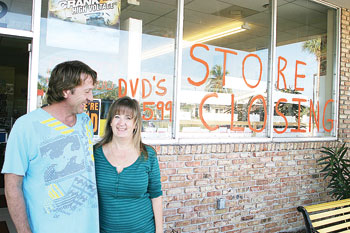A little over a month ago, I wrote a column here in the Sun, which referenced the seven-month winning streak ending Sept. 30 for the stock market’s major indexes and how it might pay to be a little cautious in the near term and watch for pullbacks in prices before moving additional money into equities.
This advice proved worthwhile, as it turns out, with the market peaking a couple days later and beginning a correction which caused the S&P 500 Index to decline about 6 percent in price. Obviously, I was lucky in calling it that close, but my intent was to try to reduce investor frustration from perhaps being out of the market during the big spring and summer rally, and now in the uncomfortable position of picking a time to re-enter the market.
Deep down, I figured a correction was likely because I was starting to feel overly confident in my abilities – a trait which generally resides in me after our clients' accounts have done well for several months, and is one which tends to come out right about when I should become less confident. Bingo, it worked! Perhaps I have the emotional scale of investing down pat, but I doubt it.
In the column in early October, I detailed how I was not negative on the stock market’s prospects to move higher, just that a pause was probably in order. Some have begun to question the market’s ability to move much higher after such a great run since March. To be honest, no one really knows what pattern the track of future market activity will look like. We all make a lucky guess sometimes, but for the most consistent results, a level of discipline must be maintained and that discipline should be rooted in an appropriate asset allocation model with buy and sell decisions based on historical evidence and patterns, all with the knowledge that there is no perfect formula which works each and every time.
So,while many are looking at the past 7 to 8 months and claiming the market’s upward run has to be over, I prefer to look at the internal market statistics and historical patterns to see if any clues are pointing to trouble ahead with the full expectation that any conclusion formed won’t be exactly right, but perhaps in the right ballpark.
After my comments in the October column related to the seven consecutive up months, we were able to dig up some research on the history of the previous times the stock market had gone up seven months in a row. The source is a site called tradersnarrative.com. I did not verify the information, but have no reason to believe it is not correct.
The table shows the previous 14 times since 1950 that the S&P 500 Index rose for seven consecutive months and the results over the subsequent 1, 3, 6, and 12 month periods. As you can see, the market tends to have positive results in most cases even over the next 1 to 3 months, but negative results were not uncommon. The one- to three-month time period following the recent seven consecutive up months would be to the end of October, which was a down month, and the end of December.
The 6- and 12-month results are the most intriguing though. Note how in the previous 14 cases, stock prices moved up in all except one case six months later and two cases 12 months later, with the maximum loss being only about 5 percent. With the normal disclosure of past performance not being able to make any guarantees of future results, I believe that investors today should take away from this analysis that is hard to predict a decline in prices based merely on examining the last few months of success.
Subjective opinion – I expect further gains in the next year for equities. But, my opinion should never be the basis for your asset allocation plan or the timing of your purchases. I don’t even manage my own money based on my opinion. It is directed with our disciplined models and processes. I encourage you to have a high level of discipline as well.
Tom Breiter is president of Breiter Capital Management, Inc., an Anna Maria based investment advisor. He can be reached at 778-1900. Some of the investment concepts highlighted in this column may carry the risk of loss of principal, and investors should determine appropriateness for their personal situation before investing.
Tom Breiter is president of Breiter Capital Management, Inc.,
an Anna Maria based investment advisor. He can be reached at 778-1900.
Some of the investment concepts highlighted in this column may carry
the risk of loss of principal, and investors should determine appropriateness
for their personal situation before investing.



